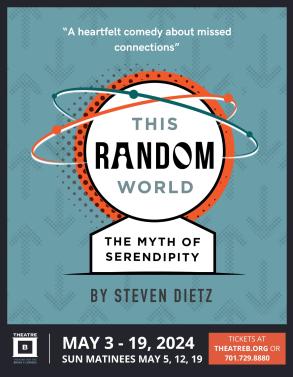Last Word | December 21st, 2016

I commend ND media outlets for raising awareness about the opiate epidemic and heroin overdoses in our communities. Stories about recovering addicts reduce stigma and shame, providing hope for those who still struggle with addictions; meanwhile, stories about people who died of an overdose offer a cautionary tale. Most importantly, media coverage about the epidemic can ignite social change and be the impetus for evidence-based policy reform.
Unfortunately, some of the coverage is misguided, focusing on the problem and appealing to fear rather than providing rational facts along with evidence-based solutions. It perpetuates myths about drug use and overdose, sensationalizing and using fear as a deterrent. If we keep skimming the surface of the issue, we fail to uncover the root of the problem. People will keep dying until we start improving our strategies.
The proof of our systemic failure to address the opiate epidemic is demonstrated in the numbers. The U.S. Center for Disease Control and Prevention identified North Dakota as one of 14 states with a significant increase in drug overdose deaths, from 20 deaths in 2013 to 43 deaths in 2014 (half being in Fargo). Local trends reflect the nationwide trends. Killing 12,150 people in 2015, the CDC found that heroin overdose is now the leading cause of injury-related death in the U.S., surpassing firearm homicides.
Before critically examining failing strategies, let’s examine the policies and programs that are helping our community. The Substance Abuse and Mental Health Administration has allocated 2 million dollars to the ND Department of Human Services to help combat opioid abuse. Locally, F-M Ambulance is estimated to have used the antidote for opiate overdoses called Naloxone (Narcan) 90 times in 2016.
ND pharmacies began carrying naloxone over-the-counter in June. The Fargo-Moorhead Good Neighbor Project opened in January of 2015, providing naloxone trainings and distribution, a syringe exchange program, Rapid hepatitis C and HIV testing, and support groups.
One of the largest victories in fighting the opiate crisis is the implementation of The Good Samaritan Law, which provides that people who witness an overdose can call 911 and have immunity from prosecution for drug ingestion and possession. Before that law, people often fled the scene of an overdose, because they feared being charged with drug possession.
Despite progress, myths and stigmatization around opiate use continue to hinder evidence-based public health interventions like offering naloxone and clean syringes. For example, Dennis Johnson, who has been a pharmacist for 50 years and is the owner of Wall’s Medicine Center in Grand Forks, refuses to carry Naloxone due to personal opposition, calling it a Band-Aid.
It is a serious ethical violation that pharmacists can decline to carry a life-saving medication, comparable to refusing to stock Epi-pens or insulin.
Other pharmacies add further barriers to accessing this life-saving antidote, which include demanding that people provide their name and driver’s license upon purchase.
It is currently illegal for intravenous drug users to buy clean syringes at pharmacies in ND or for them be distributed by nonprofits, despite the fact it reduces the spread of HIV and Hepatitis C, according to the Center for Disease Control.
Another effective solution to the opiate epidemic is Medication-assisted Treatment, Methadone and Suboxone. The World Health Organization and Institute of Medicine both state that methadone maintenance is the most effective treatment for opiate addictions, reducing mortality rates, criminal behavior, needle sharing, and risky sexual behavior.
Methadone relieves withdrawal symptoms and psychological cravings that cause chemical imbalances in the body. Bismarck has a Suboxone clinic, and recently opened a methadone clinic. West Fargo passed a “one-year moratorium” on building a methadone clinic due to “zoning regulations.” Meanwhile, Fargo’s only Suboxone clinic does not accept insurance, charging patients nearly $300 per monthly visit.
Clearly, ND is in dire need of state funding for harm reduction and medication-assisted treatment options. Yet valuable resources and time are being used supporting the “tough on crime” rhetoric.
ND Senator John Hoeven authored and introduced the Illegal Synthetic Drug Safety Act of 2016, which is supposed to prevent companies from selling synthetic variations of drugs like fentanyl by labeling the products as “not for human consumption.”
Law enforcement addresses the issue by focusing on incarcerating non-violent drug offenders and charging dealers who sell to an overdose victim with homicide, despite the fact that there is no evidence that this reduces overdose deaths or distribution of controlled substances.
One of the largest myths that the media perpetuates in this epidemic is that overdose deaths are caused by “bad batches” of heroin being laced with fentanyl. Toxicology reports find the main cause of overdose is mixing heroin or opiates with other drugs and alcohol, since they are all central nervous system depressants. The New York Department of Health found that 94% of overdose deaths involve more than one substance, aside from heroin. In fact, 60% involve benzodiazepines (anti-anxiety medications like Xanax and Klonopin).
Rather than fear-mongering and spreading hysteria about “bad” batches of street drugs, harm reduction advocates encourage disseminating rational life-saving advice for drug users. Drug users should not mix central nervous system depressants, especially benzodiazepines and alcohol, with opiates. They should not use alone, always carry naloxone, and try a small test of the drug. Once thought to increase drug use, harm reduction approaches save lives and treat people with dignity, empowering them to make their own choices.
The last suggestion for Fargo’s fight against the opiate epidemic is to include both recovering and active addicts in their discussions and committees, without fear of legal repercussion. Several community “Eyes Wide Open” panels, along with articles about this issue, lack input by addicts who are the most directly affected by this issue and are likely to offer more creative, outside-of-the-box solutions.
After disillusionment with alarming rates of overdose deaths, harmful policies, and lack of inclusion in policy making, a group of active addicts formed in Canada, called The Vancouver Area Network of Drug Users.
They carried a coffin to city hall that read, “Who will be the next city overdose victim?” They surrounded their neighborhood park with barbed wire and a sign that read, “Killing Fields.” Inside were a thousand plain wooden crosses, each representative of someone who had overdosed in the past four years.
The group was pivotal in influencing policy change and sweeping worldwide public health reform, such as syringe exchange programs, housing programs for active addicts, and safe injection sites.
The opiate epidemic and addiction is a public health issue, and we must start treating it like one. We need to bury the myths, replacing hysteria and fear with evidence-based strategies. The war on drugs has failed us. We must continue expanding services to treat rather than criminalize addicts. Lives depend on it.
April 18th 2024
April 18th 2024
March 21st 2024
September 23rd 2023
August 20th 2023




__293px-wide.jpg)
